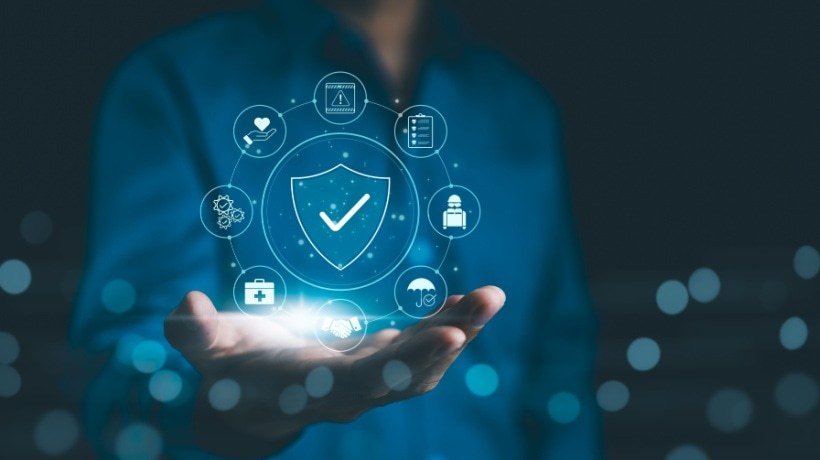Gamification Education Trends: Game Elements That Drive Corporate Learning Success
The global gamification education market is set to grow in the next few years. Different reports have pegged the compound annual growth rate (CAGR) to anything between 20% and 36%.
Every year, different trends stream in. However, eLearning gamification is one of the evergreen trends. It is widely used in K-12, higher education, and corporate eLearning sectors.
But why has gamification in learning risen in prominence in the corporate domain?
Benefits Of Gamification In Corporate Learning
Gamification in learning scaffolds content assimilation. Integrating play elements in corporate learning enhances engagement, motivation, and interest.
American poet, essayist, and naturalist Diane Ackerman rightly said, “Play is our brain’s favorite way of learning.”
Game elements aid in the comprehension, understanding, and retention of new information. The learner is highly receptive, has a positive mood, and is mentally energized to absorb knowledge.
Game elements accelerate the speed at which the learner moves from the Zone of Proximal Development (ZPD) to the Zone of Actual Development (ZAD). According to Russian psychologist Lev Vygotsky, the Zone of Proximal Development is the gap between what learners can accomplish alone and what they can achieve with guidance.
Gamification makes learning an enjoyable and satisfying experience. It promotes active and continuous learning and thereby productivity.
Companies’ efforts of eLearning course delivery yield higher rates of return. The skills gap narrows, and the organization is better positioned to circumvent market competition.
If knowledge is power, then curiosity is the muscle. – Danielle LaPorte
Curiosity fuels discovery, inquiry, and learning. Gamification sparks curiosity, as it includes challenges and interactive elements that encourage exploration. eLearning gamification promotes healthy competition as learners are motivated to improve their performance. The game elements help learners complete an eLearning course of 30 minutes or more without realizing the passage of time. No one is concerned about attention span.
Gamification And Game-Based Learning
What Is Gamification?
In eLearning, the terms game-based learning and gamification are often used, but they differ. Gamification in learning refers to the process of incorporating game elements into online training. These elements include scoring mechanisms, badges, awards, levels, and leaderboards. Game-based learning uses a full-fledged game to cater to the learning objectives and include game elements. Let’s explore these elements.
Game-Based Or Gamification Elements
The game elements transform learning into a challenge and a rewarding experience. Here are some of them.
- Points and badges: Learners earn points or rewards for completing levels, tasks, knowledge checks, and assessments. This eLearning gamification element reinforces motivation and progress.
- Leaderboards: Leaderboards track the progress of each learner and can be customized. The points and badges earned at every level, quiz, or any other milestone are displayed on the leaderboards. It induces a sense of achievement. Learners can check, compare, and monitor their scores with those of their peers, thereby promoting healthy competition.
- Levels and progression: Gamification in learning may include levels. Learners can unlock new challenges as they advance through the course, maintaining curiosity and engagement.
- Time-based activities: Many learners find time-based activities thrilling in eLearning gamification. It enhances focus and decision-making skills. Activities like matching the following, identifying the correct option, etc., can add to the learner’s zeal.
- Storytelling and narratives: Real-world decision-making scenarios in eLearning courses allow learners to make a choice. This can help them win awards, but more importantly, it empowers them through the understanding of why something is correct or incorrect. Highly interactive, it provides a personalized learning environment. Branching scenarios can be created as video overlays, too. Simulations and role-playing provide hands-on experience in a risk-free environment.
- Avatars and personalization: It is not just activities, scores, and storytelling that alone add to the gamified quotient. Choosing the preferred avatar helps customize their learning experience and deepen connection and motivation.
- Interactive overlays: eLearning courses can include quizzes, polls, and hotspots to existing images, videos, or documents. Quiz and participation may include points. The interactivity itself is rewarding.
Do We Need To Include All These Elements?
A gamified eLearning course need not include all the elements. There are different levels or textures of gamification. At a basic level, one can add gamified assessments, various interactivities, or interactive overlays. There can be only scenario-based eLearning courses. At an advanced level, the branching scenarios and interactivities can be converted into a game with leaderboards, scores, and the unlocking of various levels. It will all depend on the time of course delivery, learners’ profiles, and so on.
Best Gamification Examples In eLearning
Let’s look at some gamification examples of how courses have incorporated different game elements to deliver a unique and engaging learning experience.
Data Privacy
With a focus on personal data, this course covers real-life instances of personal data privacy breaches and their consequences. There are essential dos and don’ts to enhance data security both at work and in daily life.
Gamified Elements: Levels, Scenario, Badge, Points
Each level is built around a learning objective and is stitched together through a single character who experiences situations in different scenarios. But it is not that the learner simply clicks through.
The learner is on a mission to guide the character to respond to the situations and unlock new challenges. The data privacy has been personified. The learner has to earn badges to deactivate the threat.
This unique combination provides an interactive, mission-driven experience. By guiding a character through real-world scenarios, learners actively apply knowledge rather than passively consuming content. Earning badges to deactivate threats reinforces learning through achievement and reward. The scenarios are relatable. The course is high on engagement and problem-solving skills related to data security principles.
Ethics At The Workplace
The course explores ethical and unethical behavior through various activities.
Gamified Elements: Levels, Scenarios, Stars, Achievement Badge
The course explores ethical and unethical behavior through various activities.
The course deviated from the traditional method of presenting the course, followed by a formative assessment. The learner is presented with a scenario-based quiz, and then the learning is revealed. Learners get stars after the completion of each level and an achievement badge on course completion.
This eLearning gamification strategy enhances engagement by reversing the traditional learning approach. By starting with scenario-based quizzes, learners actively analyze ethical and unethical behaviors before receiving the learning content, reinforcing critical thinking and decision-making skills.
Gamified elements, such as continuous rewards and real-world application, boost motivation and provide a sense of accomplishment and progression. This approach encourages deeper learning, better knowledge understanding, and retention.
Mobile-Related Security Awareness
This course focuses on mobile-related fraud and preventive measures.
Gamified Elements: Learning Journey, Scenario-Based Interactivities
Different city locations have been used to engage the learner with various thought-provoking scenarios. Once the learner makes a decision, they are apprised of the consequences, followed by preventive measures. The scenarios are so real that the learners are immersed in this course until the end, without the need for levels or scores to maintain curiosity.
Learners develop critical thinking and a deeper understanding of real-world challenges by making decisions and immediately seeing the consequences. Realistic storytelling naturally drives engagement. This approach encourages active participation, improves decision-making skills, and reinforces preventive measures in a way that feels intuitive and impactful.
The learning journey can include dice games, roadmaps, locations, adventure, puzzles, and more to stitch a course together. The possibilities are endless.
Food Processing
This course focuses on food labeling as per regional certification requirements.
Gamified Elements: Avatar, Points, Interactivities
The chosen avatar guides you through different activities, and the learner wins points for every right action.
The avatar not only guides the learners but also helps create a personalized and immersive learning experience. Points and rewards reinforce positive behavior, boost motivation, and encourage active participation. The gamified approach improves knowledge retention and decision-making skills. The interactive mission keeps learners engaged and invested in the content.
Information Security
The awareness course focuses on safeguarding computers from common attacks, preventing identity theft, and proper handling of sensitive information. It covers risk identification, mitigation, and best practices.
Gamified Elements: Levels, Interactivities
The content is presented through activities that the learner performs as part of the mission. This mission cruises through different levels, and the content is presented as the learner makes decisions in different scenarios.
The interactive missions make learning more dynamic and enjoyable. Decision-making in different scenarios helps learners develop critical thinking and problem-solving skills. The hands-on approach improves knowledge retention, boosts motivation, and encourages active participation. Instant feedback reinforces learning and fosters a sense of achievement and progress.
Cyber Security
When gamification meets Virtual Reality (VR).
This course provides an engaging overview of essential cybersecurity concepts through an interactive VR-based experience. Learners explore scenarios related to threat detection, data protection, and risk management in a controlled environment. Designed for quick and impactful learning, it equips participants with a foundational understanding of cybersecurity principles and their application in real-world situations.
Gamified Elements: VR, Levels, Scenarios
The 360-degree images simulate a real-world environment. The content is presented in an intriguing manner. Learners also need to answer the questions correctly to gain access cards to the next levels.
This eLearning gamification strategy creates an immersive learning experience, making the content more engaging and relatable. The captivating interactive format encourages exploration and deeper understanding. The quizzes and levels add an element of challenge and motivation, reinforcing knowledge retention. This approach enhances critical thinking and problem-solving skills. It also keeps learners actively involved, ensuring a rewarding and memorable learning journey.
View demos.
Conclusion
You just saw 6 gamification examples that highlighted how content can be presented in different ways using various gamified elements. The different combinations and permutations of the gamified elements can make the eLearning courses captivating and rewarding.
When gamification and training come together, it’s an advantage for businesses. Companies stay ahead of the competition and are future-ready through a treasury of dynamic skillsets.
It is an adventure to find the right eLearning gamification strategy for the target audience—we will explore them to help you reach your learning outcomes. At Tesseract Learning, our learning and visual architects constantly challenge their approaches to design, develop, and deliver effective L&D programs. To learn more about our products and services and how we can help you, contact us.
Tesseract Learning Pvt Ltd
Tesseract Learning works with global organizations improve employee performance through spectrum of digital learning solutions. Solutions include eLearning, mobile learning, Microlearning, game based learning, AR/VR, Adaptive learning amongst others.










